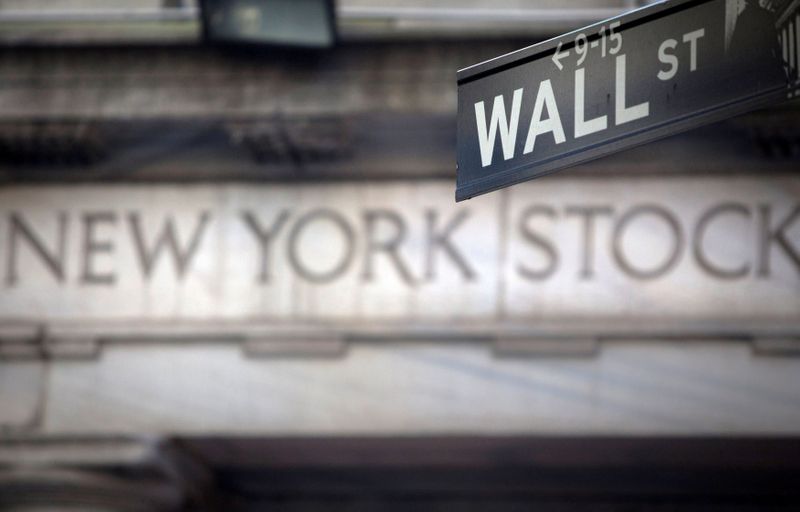By Jamie McGeever
(Reuters) - Wall Street is screeching to yet another all-time high, just as the Fed's Jackson Hole symposium is set to address wealth inequality and the central bank's role in fueling asset price inflation is once again coming under harsh scrutiny.
It is undeniable that trillions of dollars of asset purchases and years of official interest rates of zero and 10-year bond yields barely above 1% have boosted stock prices.
But the significance of Fed actions are overstated.
The tech-heavy composition of Wall Street, which benefits more from low interest rates and plain old stronger economic growth, are adding fuel to the U.S. stock surge. And the Fed's large balance sheet expansion is nowhere near the European Central Bank or Bank of Japan's.
Look no further than Wall Street: The S&P 500 has more than doubled from its COVID low of March last year, chalking up 51 record highs this year.
According to Ryan Detrick, chief market strategist at LPL Financial in Charlotte, North Carolina, only 1964 and 1995 had more than 50 new highs by the end of August. He reckons the S&P 500 could make 78 new highs this year, eclipsing the all-time record of 77 set in 1995.
On a 12-month forward earnings valuation basis, the S&P 500 earlier this year was its most expensive since 1999, just before the tech bubble burst. This price/earnings ratio has since drifted lower. But it is still above 20, which is unfamiliar territory for most of the last two decades.
Official interest rates and ultra-low benchmark bond yields make investing in profitable, cash-generating companies an attractive proposition. To some investors desperate for return, riskier stocks are a no-brainer.
Many argue there is a natural consequence of the Fed doubling the size of its balance sheet to $8.3 trillion since the pandemic outbreak.
As a share of GDP, that is now around 40%.
With stocks and other financial assets mostly in the hands of society's better off, critics say U.S. monetary policy is widening the gap between rich and poor and directly exacerbating wealth inequality.
The world's second and third largest central banks, meanwhile, have also ramped up their pandemic-fighting asset purchases. Their balance sheets, as a share of GDP, are far bigger than the Fed's. Yet stock markets and valuations in the euro zone and Japan are nowhere near as high.
"The commonly held narrative centers on the Fed, and if everyone believes that, then it is self-reinforcing," said Meb Faber, co-founder and chief investment officer at Cambria Investments in El Segundo, California.
"But there is a limit as to how far you can extrapolate that."
The ECB has grown its balance sheet to $9.5 trillion since the outbreak of the pandemic. The ECB's balance sheet is now worth more than 60% of euro zone GDP.
Similarly, the Bank of Japan has grown its balance sheet by $1.4 trillion since March 2020 to $6.6 trillion, around 120% of GDP.
Yet the euro Stoxx 50 is up 'only' around 65% from the COVID low, and is still 23% below its record high from March 2000. Euro stocks' 12-month forward price/earnings ratio is around 16.
Japan's Topix is up 55% from the COVID low and has a forward multiple of around 13.
Both figures, again, are significantly below their U.S. equivalents, suggesting factors other than central bank largesse are behind Wall Street's surge.
For one, the U.S. equity market is far more tech- and digital-heavy than its global peers.
A world of zero interest rates benefits tech companies disproportionately because a low discount rate inflates future cash flows for companies where cutting edge innovation is likely to fuel faster growth. By any measure, the big five tech 'FAANG' stocks - Facebook (NASDAQ:FB), Amazon (NASDAQ:AMZN), Apple (NASDAQ:AAPL), Netflix (NASDAQ:NFLX) and Google (NASDAQ:GOOGL) - dominate Wall Street. They have risen more than three times the broader S&P 500 in the last five years and their $7 trillion market cap is 21% of the whole index.
Another is good old-fashioned economic growth.
Some of the more bullish U.S. forecasts have been trimmed recently, but the International Monetary Fund expects 7.0% GDP growth in the United States this year, 4.6% in the euro zone, and just 2.8% in Japan.
On top of that, Corporate America is motoring along nicely.

LPL Financial's Detrick notes that some 85% of S&P 500 companies posted second quarter earnings beats. And 2021 consensus earnings per share estimates are for a 43% jump from last year.
"The Fed backstop helps explain why people are willing to pay higher multiples. But higher earnings are higher earnings, and that justifies a lot. Investors still see better opportunity in the U.S., and are willing to pay that premium," he said.
(By Jamie McGeever; Editing by Edward Tobin)